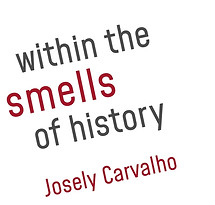JOSELY CARVALHO
multimedia artist
History: cannon 45 - SIGA nº 015493
This weapon is a carronade, a type of short-range artillery used mainly in naval battles. Its name comes from the Carron foundry in Scotland.
It is believed that this carronade equipped the Fort of São Clemente da Piaçava, which was located on what is now São Clemente Street, in the Botafogo neighborhood of Rio de Janeiro. It was intended to defend the access of the so-called Old Way, which united the lands of the former Engenho Real in the Sacopenapã lagoon (now the Lagoa Rodrigo de Freitas) to the lands of the José Pereira Botafogo farm, which later gave the neighborhood its name. The fort’s construction took place between 1767 and 1769. However, by means of an 1831 decree, it was disarmed and deactivated. The fort was located at the foot of Morro da Piassava on the former shores of the lagoon, which is now full of silt and is also polluted.
When the city of Rio de Janeiro was chosen to host the 2016 summer Olympics, a series of environmental measures were proposed. If actually implemented, these would have been the Olympics’ greatest legacy for the city. One measure was to be the removal of organic matter from the bottom of the Lagoon, which receives untreated sewage flow. Apparently, the influence of cartels impeded progress on this procedure and eventually paralyzed it altogether. To date, discussion of this issue has not recommenced. Even before the start of the Olympics, 13 North American rowers showed symptoms of illness, most likely due to contamination of the waters of Lagoa Rodrigo de Freitas, which — ironically — is located in one of Rio’s elite neighborhoods.
smell Ocean PBX00014KK
This smell is not simply about ocean breezes; it seeks contextualization, both of the sailors' lives, on their journeys for months adrift, and of the pollutants that today pervade this realm. It has a harsh chord that brings out the ozone and salty scent of the ocean.
The raw material highlighted is Laminaria digitata seaweed, an algae from the Brittany region of France, with its natural salty odor and nuances of leather and moss.
An exclusive captive of Givaudan, it is used in perfumery in very homeopathic doses to suggest marine freshness and naturalness. But in this instance, we deploy an overdose of the ingredient, causing the striking and disruptive intensity of the ozone accord.
Before the time of colonization, the oceans were fresh and clear. Here we add animalic, crysilic and fetid notes, such as civet, to invoke the pollutants that today contaminate these waters.


